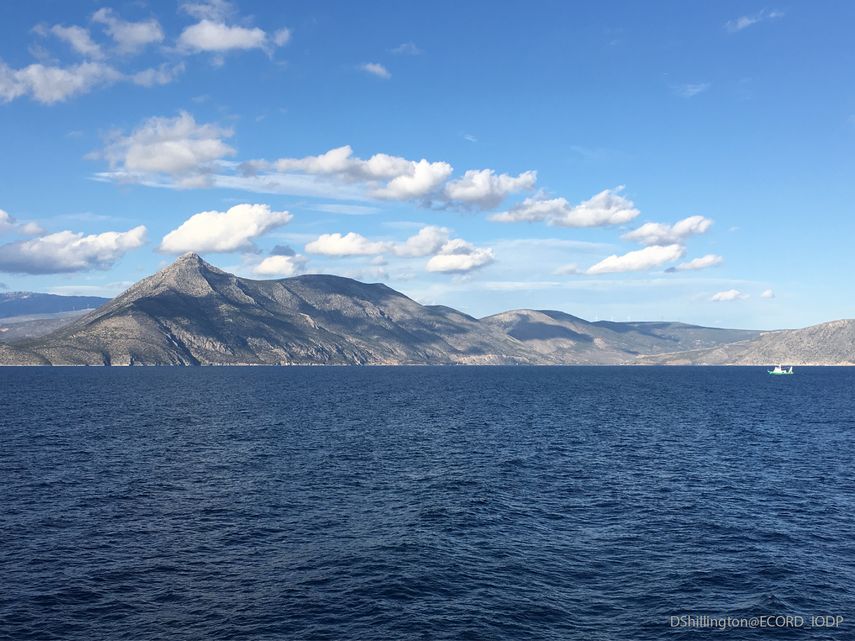The “Quaternary Environmental Changes in the Corinth Rift Area: the IODP 381palaeovegetation record (QECCoRA)” project, aims to analyze how climate variability affected the development of local vegetation and marine ecosystems using palynological analysis (pollen, spores, algae, fungi, dinoflagellates, microscopic charcoal) of the recovered deposits.
Preliminary palynological results produced during the onshore phase of the Expedition 381, suggest that the vegetation cover in the borderlands of the Gulf of Corinth is a major factor controlling sediment supply and induced sedimentation rates in the basin. Reduced vegetation cover during glacial periods triggered higher sediment fluxes, while duringinterglacials the afforestation of the terrestrial environment resulted in higher soil stability and lower terrigenous input (McNeill et al. 2019). Furthermore, marine microfossil assemblages (including foraminifera, coccolithophores, diatoms, and aquatic palynomorphs)analysed during the onshore phase of the Expedition 381 show a high complexity/diversity of aquatic environment alternations/transitions ranging between marine to freshwater conditions, mainly influenced by 10-100 kyr climate and sea-level fluctuations (McNeill et al. 2019a; b).
Therefore, the palynological analyses in the context of this project constitute a crucial element of the IODP Exp. 381 research plan, since they shall considerably contribute to the resolution of the changes in the aquatic as well as terrestrial palaeoenvironments in order to reconstruct the regional climatic conditions within the Corinth basin through the geologic time. Situated at a key location at the southernmost tip of the Balkan Peninsula, the Corinth Rift deposits have the potential to be an invaluable palaeovegetation archive that will improve our understanding concerning the Quaternary vegetation development in Southern Greece.

McNeill, L.C., Shillington, D.J., Carter, G.D.O. et al. (2019a) High-resolution record reveals climate-driven environmental and sedimentary changes in an active rift. Scientific Reports 9, 3116. https://doi.org/10.1038/s41598-019-40022-w
McNeill, L.C., Shillington, D.J., Carter, G.D.O., Everest, J.D., Le Ber, E., Collier, R.E.L.,Cvetkoska, A., De Gelder, G., Diz, P., Doan, M.-L., Ford, M., Gawthorpe, R.L., Geraga, M., Gillespie, J., Hemelsdaël, R., Herrero-Bervera, E., Ismaiel, M., Janikian, L., Kouli, K., Li, S.,Machlus, M.L., Maffione, M., Mahoney, C., Michas, G., Miller, C., Nixon, C.W., Oflaz, S.A., Omale, A.P., Panagiotopoulos, K., Pechlivanidou, S., Phillips, M.P., Sauer, S., Seguin, J., Sergiou, S., Zakharova, N.V. (2019b) Corinth Active Rift Development. Proceedings of the International Ocean Discovery Program, 381: College Station, TX (International Ocean Discovery Program). https://doi.org/10.14379/ iodp.proc.381.2019